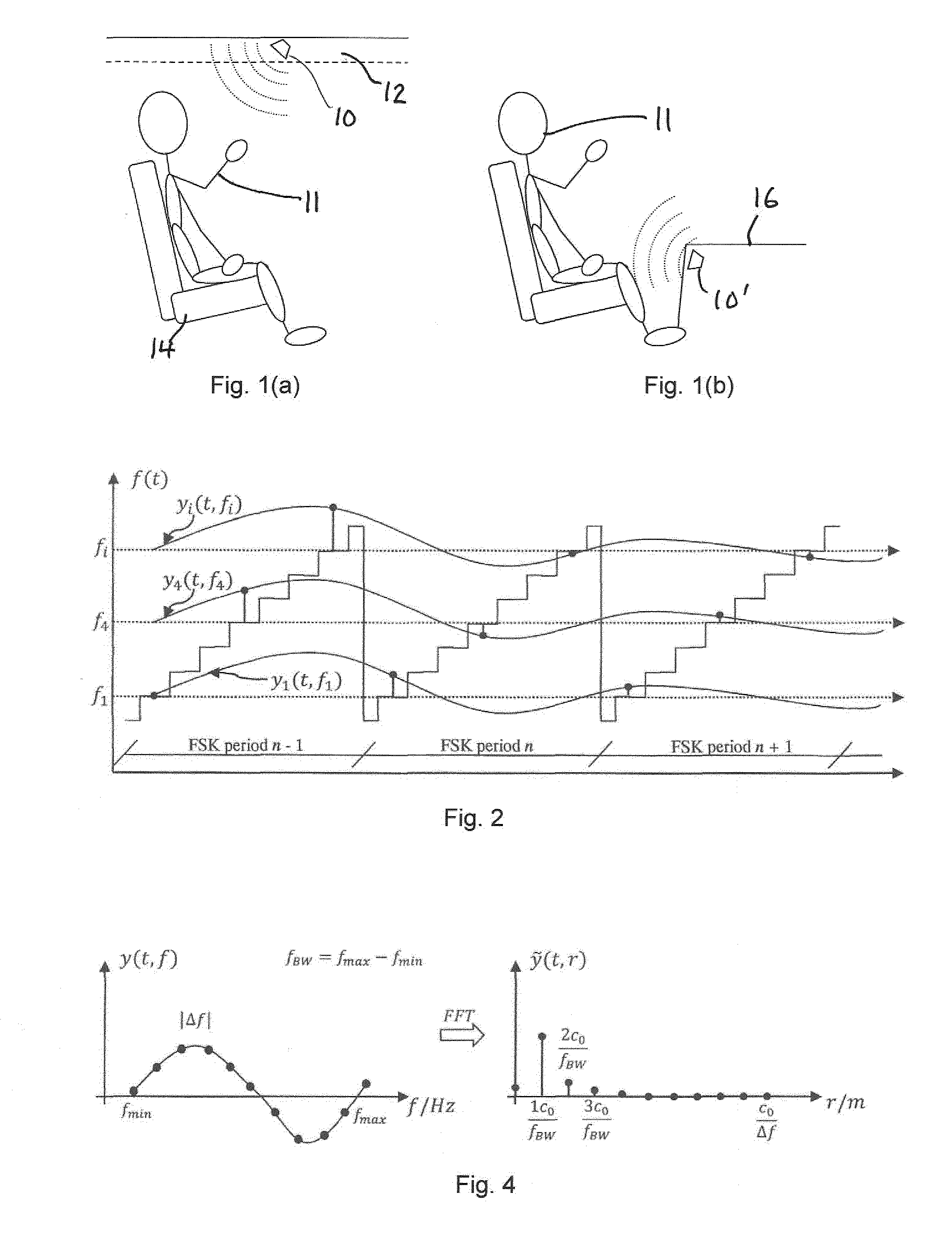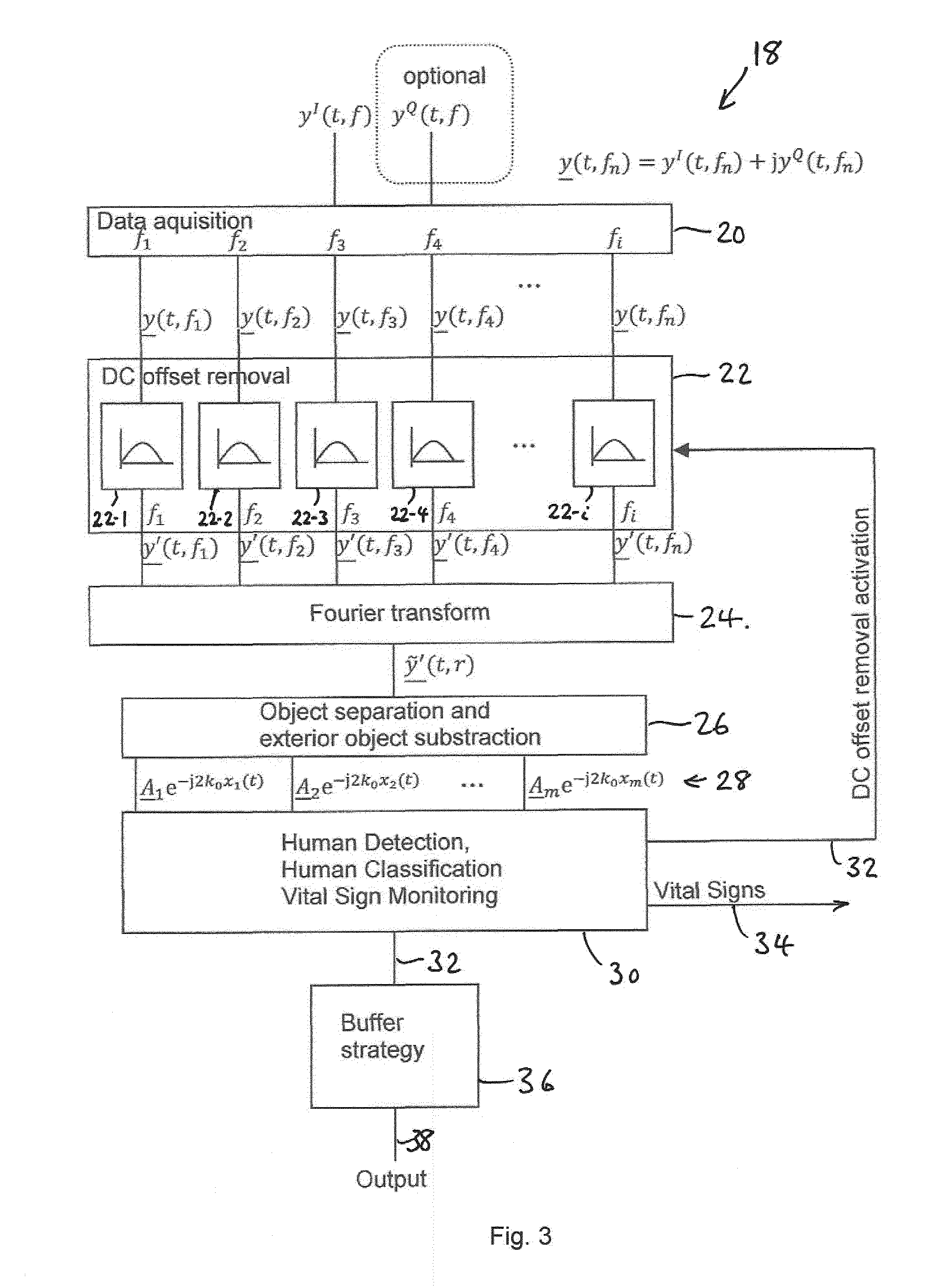Radar sensing of vehicle occupancy
a technology of vehicle occupancy and radar sensing, which is applied in the direction of pedestrian/occupant safety arrangement, applications, instruments, etc., can solve the problems of high integration cost, insufficient in order to get a reliable indication, and the inability to establish radar-based in-vehicle systems on the mark
- Summary
- Abstract
- Description
- Claims
- Application Information
AI Technical Summary
Benefits of technology
Problems solved by technology
Method used
Image
Examples
Embodiment Construction
[0058]Radar sensing within a complex environment like the interior of a car cabin is very challenging and the algorithm differs much from those for exterior radar sensing.
[0059]The advantage of radar systems is that in contrast to passive camera systems the radar system operates also in the night as it illuminates actively the scene. Active camera systems need an illumination in the light spectrum which can be visible for the human eye (compare to the glooming of infrared cameras). Radar systems work in the microwave range which is completely invisible for the human eye. In addition it penetrates into materials and can transmit through. So the integration behind plastic covers and textiles as well is possible while camera based systems need an opening to look through.
[0060]In one embodiment, the radar detection system has nearly fixed and constant antenna lobes over the whole frequency range from 24.00 GHz up to 24.25 GHz; however, the invention is not restricted to this frequency r...
PUM
 Login to View More
Login to View More Abstract
Description
Claims
Application Information
 Login to View More
Login to View More - R&D
- Intellectual Property
- Life Sciences
- Materials
- Tech Scout
- Unparalleled Data Quality
- Higher Quality Content
- 60% Fewer Hallucinations
Browse by: Latest US Patents, China's latest patents, Technical Efficacy Thesaurus, Application Domain, Technology Topic, Popular Technical Reports.
© 2025 PatSnap. All rights reserved.Legal|Privacy policy|Modern Slavery Act Transparency Statement|Sitemap|About US| Contact US: help@patsnap.com



